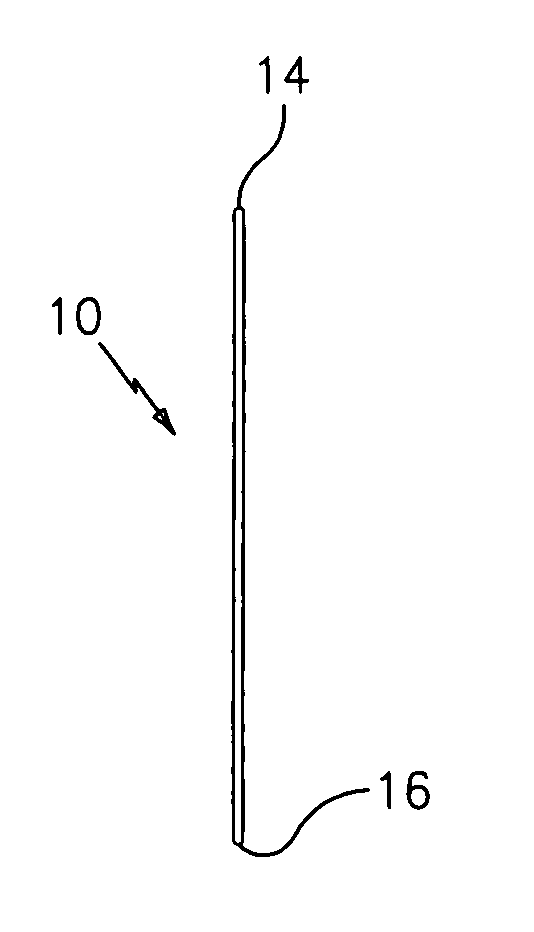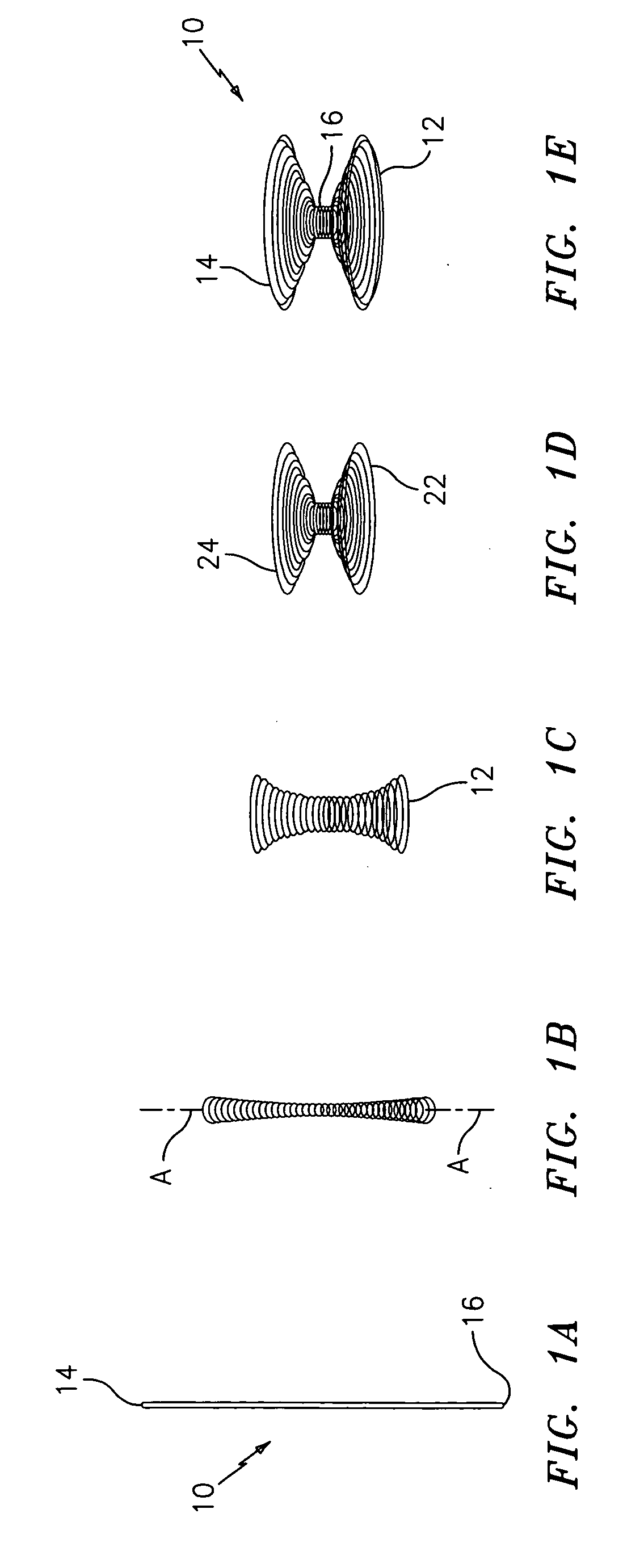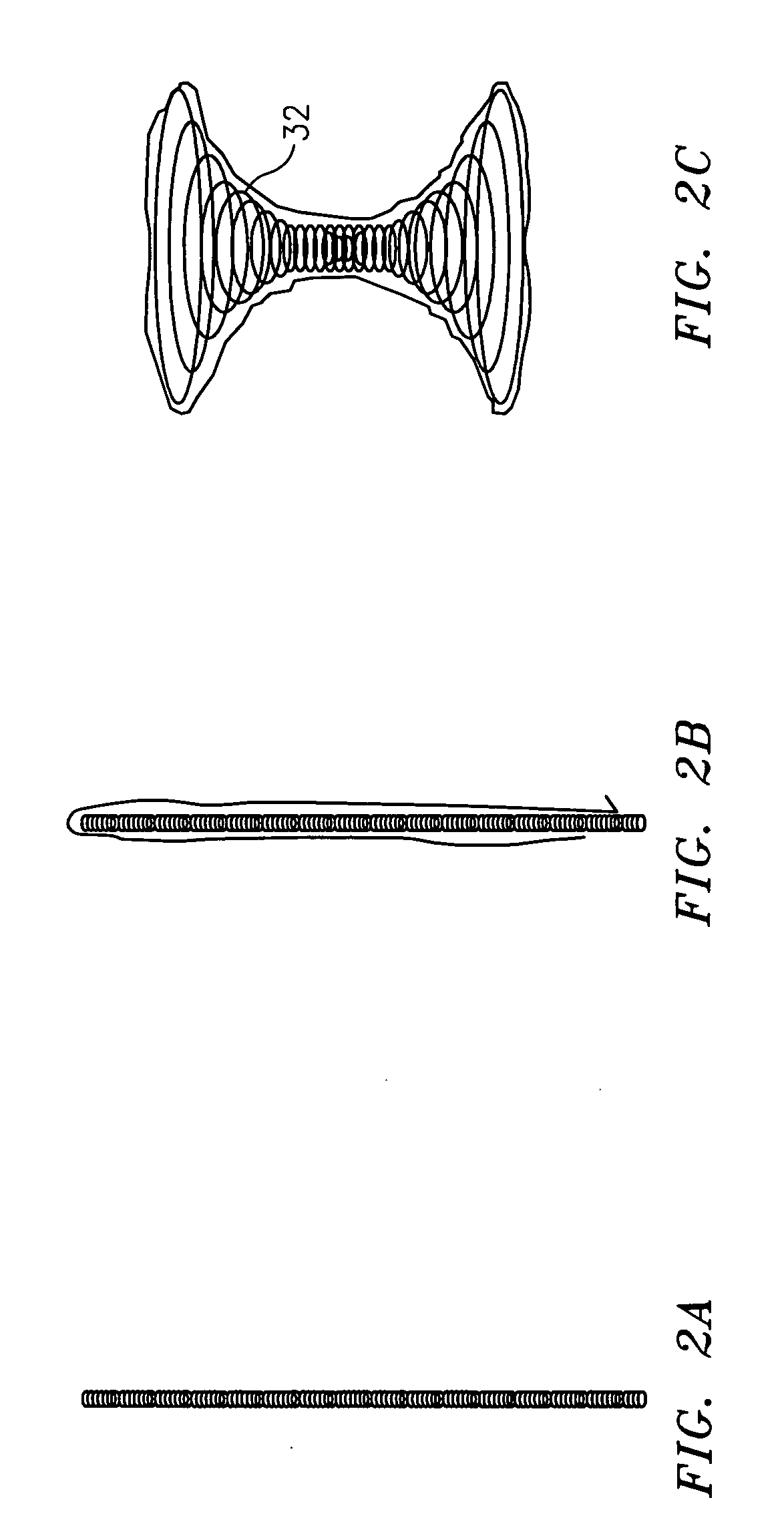Intravascular occlusion device
a technology of occlusion device and occlusion chamber, which is applied in the field of intravascular occlusion device, can solve the problems of high pulmonary arterial pressure, heart failure, and increased labor intensity of the heart muscle, and achieves the effect of easy in situ deployment and inherent spring ability
- Summary
- Abstract
- Description
- Claims
- Application Information
AI Technical Summary
Benefits of technology
Problems solved by technology
Method used
Image
Examples
Embodiment Construction
[0026]FIGS. 1-5 illustrate an occluder having a body 10 and a method of its deployment in occluding a patent foramen ovale (PFO). However, the device of this invention can also be successfully applied to occluding numerous septal defects including, but not limited to VSD, ASD and PDA. Device 10 includes a uniwire 12 made from a non-woven material that may include, but not be limited to, platinum, gold, rhodium, rhenium, palladium, tungsten, and alloys thereof. While the materials used for manufacturing device 10 are not made from shape-memory alloys, each of them has a springing characteristic allowing the device to transform its shape under certain conditions.
[0027] Capitalizing on the spring-like characteristics of the material used for making device 10, the device can be collapsed into its compressed state assuming an essentially linear configuration (FIG. 1) and in this state inserted into the lumen of a catheter at the distal (discharge) end of the latter (not shown). For exam...
PUM
 Login to View More
Login to View More Abstract
Description
Claims
Application Information
 Login to View More
Login to View More - R&D
- Intellectual Property
- Life Sciences
- Materials
- Tech Scout
- Unparalleled Data Quality
- Higher Quality Content
- 60% Fewer Hallucinations
Browse by: Latest US Patents, China's latest patents, Technical Efficacy Thesaurus, Application Domain, Technology Topic, Popular Technical Reports.
© 2025 PatSnap. All rights reserved.Legal|Privacy policy|Modern Slavery Act Transparency Statement|Sitemap|About US| Contact US: help@patsnap.com



